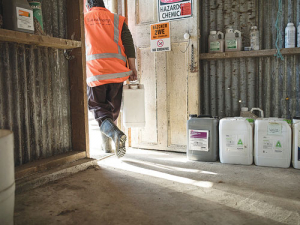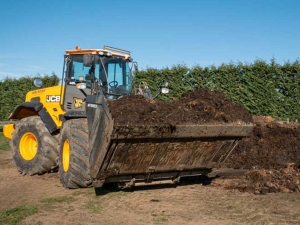WorkSafe’s sector lead for agriculture, Al McCone, explains more about what the new regulations mean for farmers and why, two months in, if you haven’t already thought about it you need to check that you are doing things right.
THE HEALTH AND Safety at Work (Hazardous Substances) Regulations 2017 took over from the Hazardous Substances and New Organisms (HSNO) Act 1992. Our knowledge over the 25 years since HSNO was introduced has significantly increased and we now understand more about how working with hazardous substances can have detrimental and even fatal effects on a worker’s health.
Each year there are 600-900 deaths and 30,000 serious health conditions diagnosed that stem from work-related health risks. Many of these numbers relate to the one in three businesses in New Zealand that works with hazardous substances, which includes farming. The new regulations target a reduction in harm through safer management of hazardous substances at work.
As a farmer, working with hazardous products like sprays and fertilisers frequently might not have an immediate effect on your health.
The harm from these substances can take 25 to 30 years to show, which is usually too late to prevent the serious consequences that may arise.
It is knowing how to handle them now, and making sure they don’t get into the hands of someone inexperienced, that will make the difference to health outcomes. That difference might just keep you around for your spouse or partner, your children or your grandchildren.
The new regulations aren’t especially complicated for those working on farm and if you were already compliant under HSNO, there won’t be much to do.
But if you haven’t really thought about your handling of hazardous substances, here are 10 steps farmers can take to help meet the new regulations.
1. Keep an inventory. Create an inventory of the hazardous substances used, handled and stored in your workplace. Inventories are mandatory under the new regulations.
• To make it easier, WorkSafe’s Hazardous Substances Toolbox website includes a workbook with tips, checklists and a downloadable inventory form. You can also use the toolkit’s calculator to create and edit an online inventory.
2. Use and share safety data sheets. These record key information about hazardous substances, e.g. its properties, how to store it, what personal protective equipment is needed, and first aid information. The sheets must be easily available to workers, emergency services or anyone else likely to be exposed to a substance.
• You can get safety data sheets from your supplier for each hazardous substance in your workplace.
3. Do a risk assessment. Think about the hazardous substances you work with: can you do without any or substitute them for a safer product? For any hazardous substances that remain after this assessment, you must put in place the controls set out in the regulations.
• If you no longer need the product, then dispose of it sensibly through AgRecovery and the problem is gone.
4. Inform and train your workers. You must give every worker likely to handle a hazardous substance the appropriate information, instruction, training and supervision to safely do their work.
• You wouldn’t let a worker use a chainsaw without knowing they were competent and using the correct protection. The same rule applies for using hazardous substances.
5. Prepare for emergencies. As well as doing all you can to eliminate or, if not possible, minimise risks for most substances the new law requires you to create a plan outlining how you will deal with a hazardous substance emergency at your workplace.
• Think about what you and your workers will do if something goes wrong, e.g. someone is poisoned or burnt, a fire breaks out or there’s a leak; then make a plan.
6. Correctly label containers of hazardous substances, including hazardous waste. Labels tell people what’s inside a container and what steps to take to stay safe. Manufacturers and suppliers must correctly label their products. And anyone using it must make sure the label stays fixed to the container and can be read.
• If you put a substance into another container, make sure it’s labelled correctly.
7. Install warning signs. Place signs where hazardous substances are used and stored at your workplace, e.g. at entrances to the property, the building and the rooms where hazardous substances are located. These let your workers and visitors know they must take care or steer clear, and they alert emergency services to the type of substances on-site if there’s an incident.
• You can get these signs from hardware stores, farm supply stores and online safety gear distributors.
8. Make sure storage areas and containers are safe. Store only what you need, make sure incompatible substances are kept separate, use containers appropriate for the substance and label everything clearly.
9. Take care with hazardous waste. Dispose of hazardous substances safely and appropriately. Read the safety data sheet and contact the local council for disposal advice.
• Agrecovery (www.agrecovery.co.nz) provides a service for the disposal of agrichemicals.
10. Provide protective gear. You must ensure workers handling hazardous substances have suitable protective clothing and equipment.
• Don’t just give your workers an allowance to buy their own. Make sure it is the right level of protection, it fits properly and they know how to correctly use and maintain it.
WorkSafe’s website has information and its online Toolbox has tools to help www.hazardoussubstances.govt.nz









